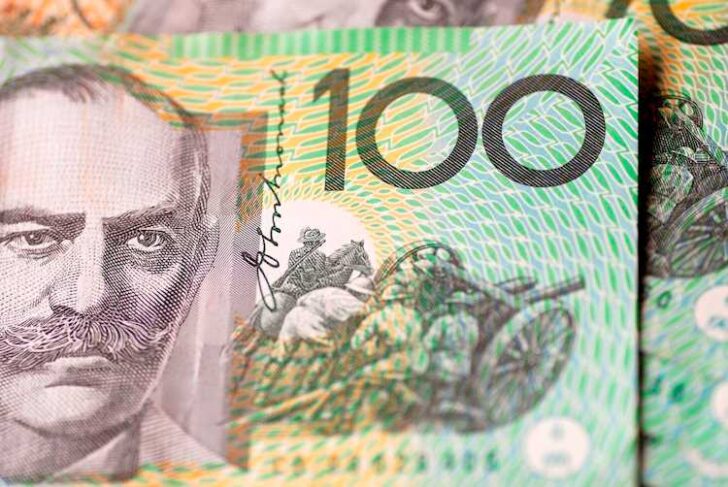- Australian Dollar gains ground on improved domestic economic data on Thursday.
- Australia’s Judo Bank Services and Composite PMIs improved to 54.4 and 53.3, respectively, in March.
- US Dollar receives downward pressure due to lower US Treasury yields.
The Australian Dollar (AUD) continues to gain ground on the third successive session after improved Judo Bank Purchasing Managers Index (PMI) data released on Thursday. Additionally, improved Building Permits (YoY) figures released by the Australian Bureau of Statistics added support to the advance of the AUD.
The AUD/USD pair posted solid gains on Wednesday, as US Dollar (USD) suffered losses due to falling US Treasury yields, while US economic data was mixed, with a stronger ADP Employment Change but softer ISM Services PMI data from the United States (US). Additionally, improved Chinese Services PMI might have contributed support to underpinning the Aussie Dollar.
The US Dollar Index (DXY) attempts to snap its two-day losing streak amid dovish remarks from Federal Reserve officials. Fed Chair Jerome Powell reaffirmed the US central bank’s preparedness to implement rate cuts, emphasizing a data-dependent approach. Atlanta Fed President Raphael Bostic’s remarks advocating for a rate cut in the final quarter of 2024. Adriana Kugler, a member of the Fed Board of Governors, highlighted that the ongoing disinflationary trend would necessitate rate reductions, with expectations of at least three cuts by the last quarter of 2024.
Daily Digest Market Movers: Australian Dollar appreciates on improved Judo Bank PMI figures
- Australia Judo Bank Services PMI improved to 54.4 in March from 53.5 in February. Judo Bank Composite PMI increased to 53.3 from the previous reading of 52.4.
- Australia’s Building Permits (MoM) fell by 1.9% in February against the expected increase of 3.3% and the previous decline of 2.5%. In comparison, there is an increase of 5.2% YoY, compared to the previous increase of 4.8%.
- Australian Industry Group (AiG) Industry Index showed improvement in February, rising to a reading of -5.3 from the previous -14.9.
- AiG Manufacturing PMI came in at -7, compared to the prior reading of -12.6. AiG Construction PMI posted a reading of -12.9 in February against the previous -18.4 reading.
- RBA March minutes showed that the board did not contemplate the option of raising interest rates. They unanimously agreed that it was challenging to definitively predict future changes in the cash rate. While the economic outlook remained uncertain, the risks appeared to be generally balanced. The board acknowledged that it would require “some time” before they could express confidence in inflation returning to the target level.
- According to Westpac’s summary of the Reserve Bank of Australia (RBA) March meeting minutes, the current cash rate level is considered suitable for the present circumstances, although conditions may change in the future.
- China’s Services PMI improved to 52.7 in March, compared with the previous reading of 52.5.
- US President Joe Biden engaged in a phone conversation with Chinese leader Xi Jinping sometime after November. During the call, the two leaders had an open and constructive dialogue covering various bilateral, regional, and global topics, addressing both areas of collaboration and points of divergence.
- Treasury Secretary Janet Yellen is set to visit China this week, where she will hold meetings with China’s Finance Minister, as well as engage with economists, students, and members of the business community.
- Cleveland Fed President Loretta Mester indicated on Tuesday her anticipation of rate cuts later this year. Concurrently, San Francisco Fed President Mary Daly expressed her view that three rate cuts in 2024 appear “reasonable,” contingent upon further convincing evidence to solidify such a decision.
- US ADP Employment Change rose by 184K in March, compared to the 155K increase in February, above the market consensus of 148K.
- US ISM Services PMI eased to 51.4 in March from 52.6 in February, weaker than the expectation of 52.7.
- US ISM Manufacturing PMI indicated a surprise expansion in March, as the index climbed to 50.3 in March from February’s 47.8, surpassing expectations of 48.4. This reading marked the highest level observed since September 2022.
Technical Analysis: Australian Dollar rises to near 0.6580, next key resistance at 61.8% Fibonacci retracement
The Australian Dollar trades around 0.6580 on Thursday. The key resistance region appears around the 61.8% Fibonacci retracement level of 0.6596, in conjunction with the psychological level of 0.6600. A breakthrough above this level could lead the AUD/USD pair to explore the area around the major level of 0.6650 and March’s high of 0.6667. On the downside, Immediate support is seen around the major level of 0.6550 and the 14-day Exponential Moving Average (EMA) of 0.6543. A break below the latter could exert downward pressure on the AUD/USD pair to approach the psychological level of 0.6500.



Leave a Reply